Whether you’re brand new to LOU or just new to LOU Accounting, we gotta get those Accounts Payable (AP) Beginning Balances entered so LOU can accurately track and report balances starting on your Go-Live Date. You owe people money and you need to track that information!
IMPORTANT! This will usually be one of your last action items immediately prior to going live so that the balances are the most current. Once you go live, you will not be able to enter Beginning Balances, but you can create a Journal Entry to get those balances recorded.
To update AP Balances after go-live, you will have to follow the standard Expense process.
WAIT! Before you can proceed, make sure you have Vendors and your Chart of Accounts complete.
Use these links to jump ahead:

Go to Setup / Accounting / Enable Full LOU Accounting / Enter Accounts Payable Beginning Balances
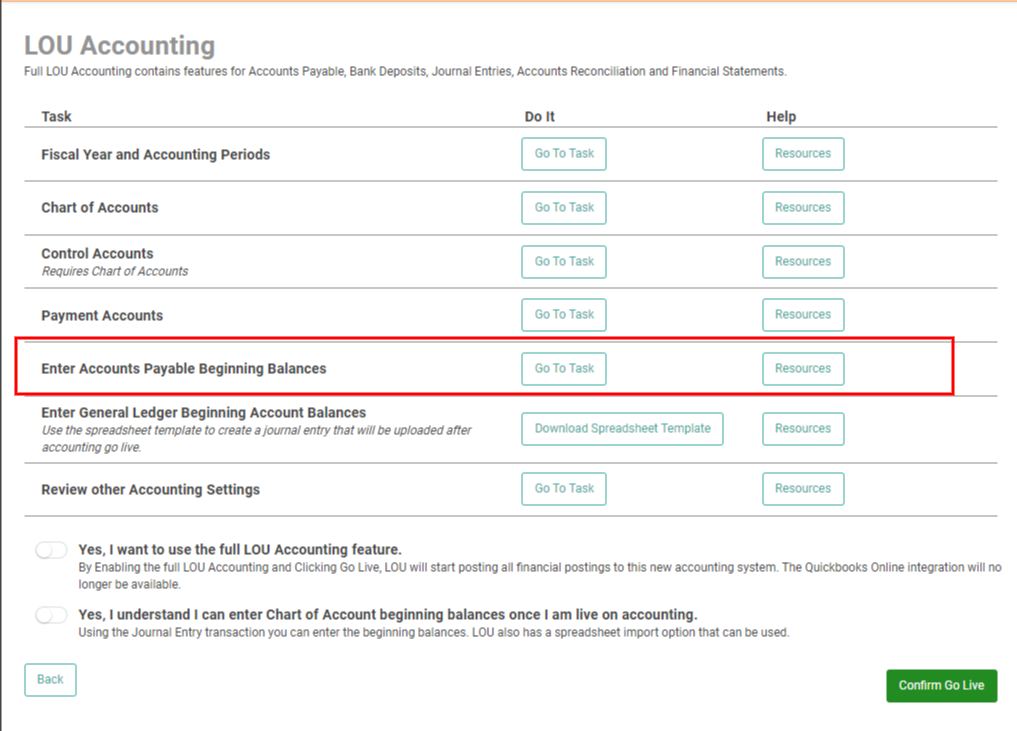
On the Accounts Payable Beginning Balances page, you can create a balance manually or download an import spreadsheet to import them en masse.
Just like other Beginning Balances, if you’ve created one in error, you can delete it.
REMEMBER! You cannot delete or remove Beginning Balances after you have gone live.
Create an AP Beginning Balance
To create a Balance you’ll need to make sure any Vendors to whom you owe money are created as Vendors in LOU.
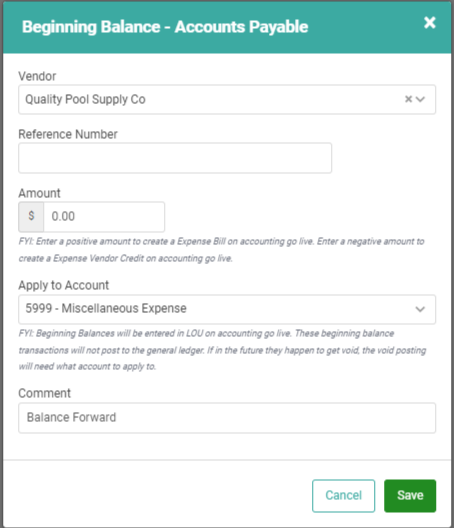
- Select the Vendor to whom you owe money.
- Enter a Reference Number if you choose.
- Enter the Beginning Balance Amount.
- A positive number will create an Expense Bill on go-live for Accounting.
- A negative number will create an Expense Vendor Credit on go-live for Accounting.
- Select the GL Account associated with the balance.
- REMEMBER! Beginning Balance transactions will not post to the GL. They are associated with the GL Account in the event an amount must be voided.
- Enter an optional Comment. LOU Defaults “Balance Forward”.
- Click Save.
Your new AP Beginning Balance will be listed on the AP Beginning Balance Page. You can repeat these steps for each AP Balance you need to create.
Import AP Beginning Balances
Got a whole bunch of AP Beginning Balances and don’t want to enter them individually? You can create an import spreadsheet!
VERY IMPORTANT! Do not change the template in any way. Populate data in the fields, but do NOT change formatting, add additional columns, or move columns around. Templates are intended to be a document with specific formatting and placement already configured. Making changes to these preconfigured fields will cause errors and prevent the data from importing correctly.
Click the Import Spreadsheet Template to head to Spreadsheet Uploads. From there, click Template and select Accounts Payable Beginning Balances from the dropdown. Click Create Template to download the spreadsheet.

Create a File to Upload
The Template will download to the folder designated as the default on your browser settings. For most people, this will be the Downloads folder.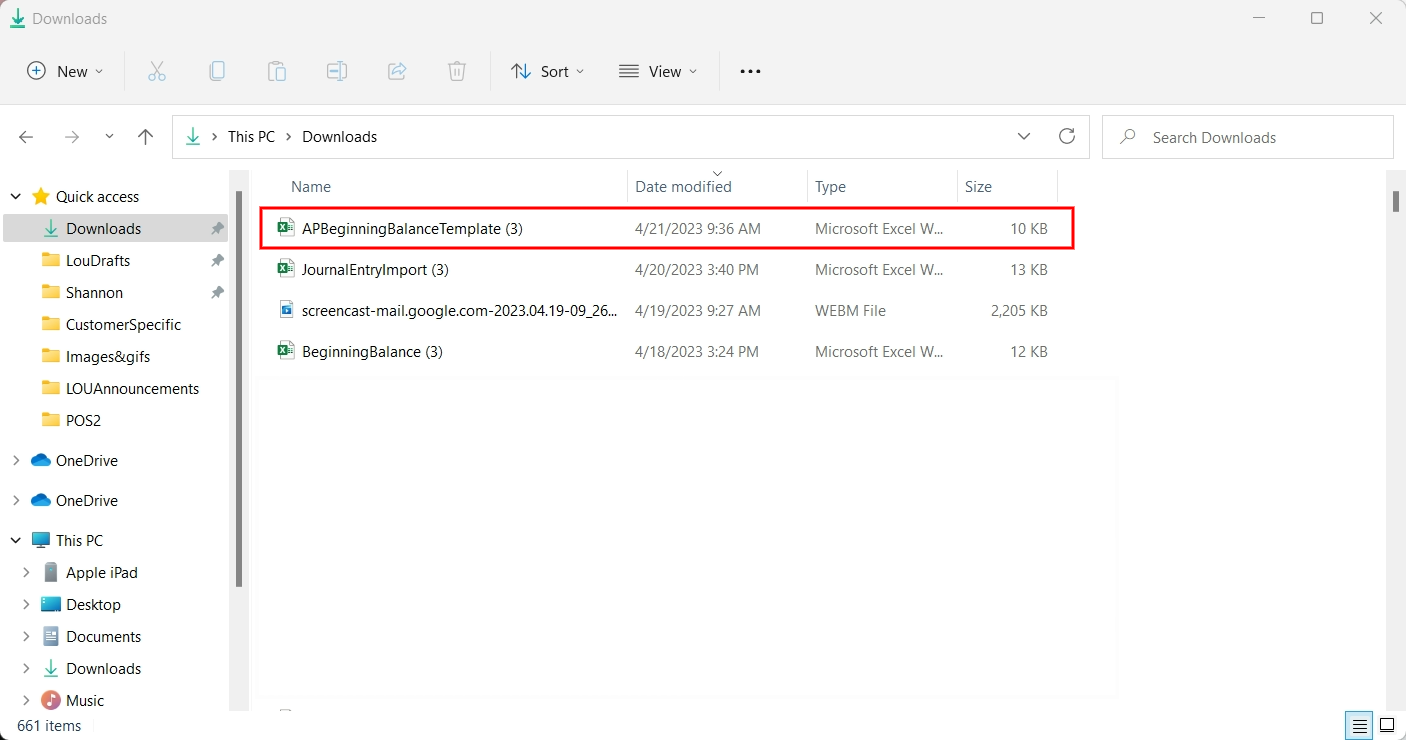
The file will be an .xlsx file which can be opened by Excel. If you are having trouble getting the file to open, you may need to change the default app used to open this file type in your Windows Settings. Find instructions on doing so here.
The Template contains every field available to create AP Beginning Balances. The fields which are required are highlighted. You cannot upload data without these fields correctly populated. All the non-highlighted fields are optional.
IMPORTANT! Do not change the formatting of the template. Excel may add characters or formatting that are not recognized by LOU.
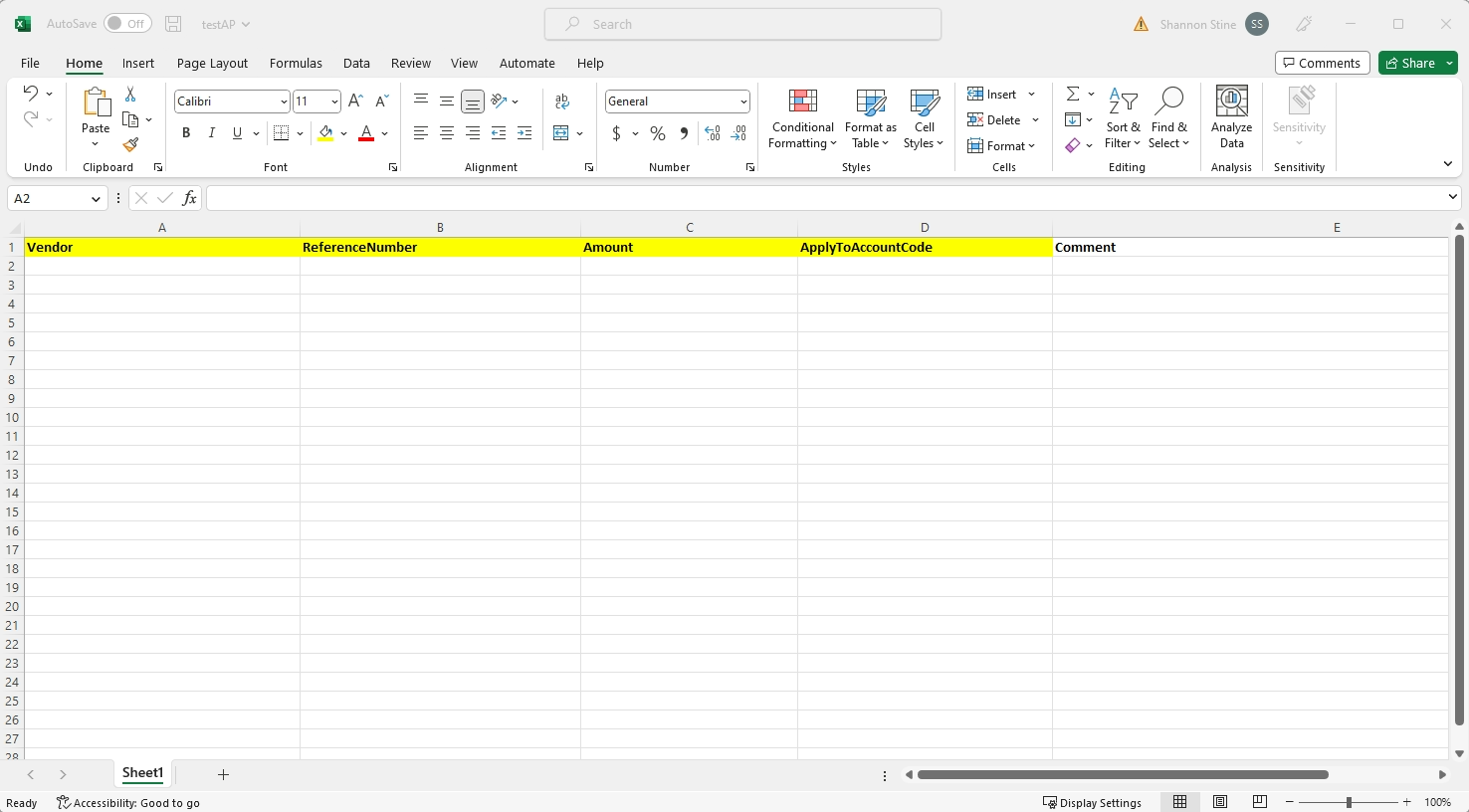
The fields included in the import are:
Vendor: This is the Vendor to which you owe money.
Reference Number: This may be your own Reference Number or one provided by the Vendor.
Amount: The Amount you owe the Vendor.
Apply To Account Code: What General Ledger Code should the balance be applied to?
Comment: Optional field for any comments you would like to leave on this Beginning Balance. Character limit is 200.
REMEMBER! Everything in LOU is case-sensitive, spelling matters, and spaces are considered characters. If you are referencing existing data in the import, you must make sure to enter it on the template exactly the same way it appears in LOU. If you spell or format the data differently by case, spacing, etc., LOU will not recognize it as existing data. This may result in errors while uploading or duplicated data.
Upload Spreadsheets
Imports are not intended to be a process you sit and watch. Once you click Upload and the file is processing, you can click out of imports and continue your work elsewhere in LOU. You will be notified via email when the import is complete.Once you’ve used the Template to create the Spreadsheet, you can upload by clicking
 .
.
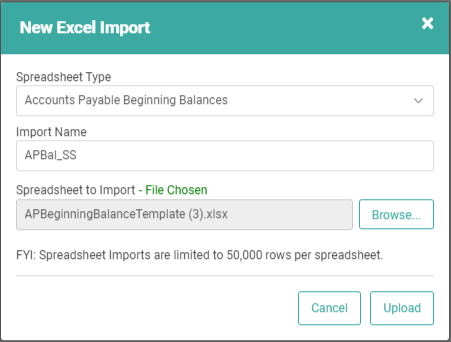
- Select your Spreadsheet Type
- Give your import a Name
- Select the file from your computer to upload
- Click

You should see the Status changing from Uploading to Queued or Validating, then Ready to Import.
IMPORTANT! Large import files (2501+ records) will take several minutes or more to upload. The system must go through the data line-by-line and add it appropriately. We recommend performing large imports during off-peak hours when there is less activity. Imports that are 5000 records or more will be queued for import after 4pm PST.
When you receive email confirmation that the upload is ready to import, you can return to the Import Data screen and View Details on the import to confirm the data is importing correctly.
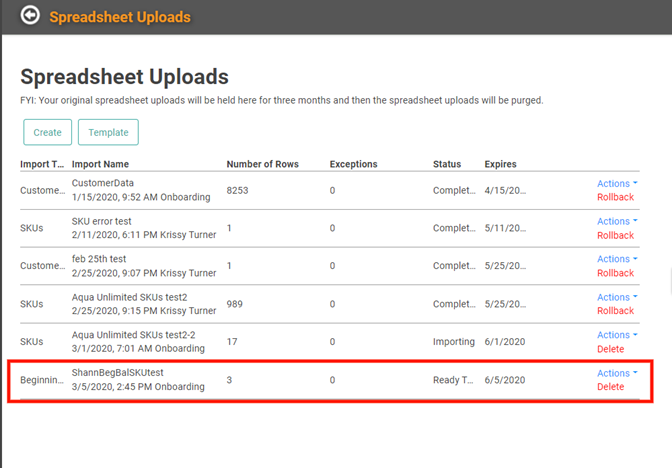
- Click the Actions link next to the import.
- Select View Details.
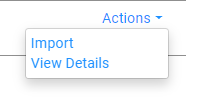
- The information in the spreadsheet has not been added to your database yet. Confirming the information here is an important step in preventing bad data uploads.
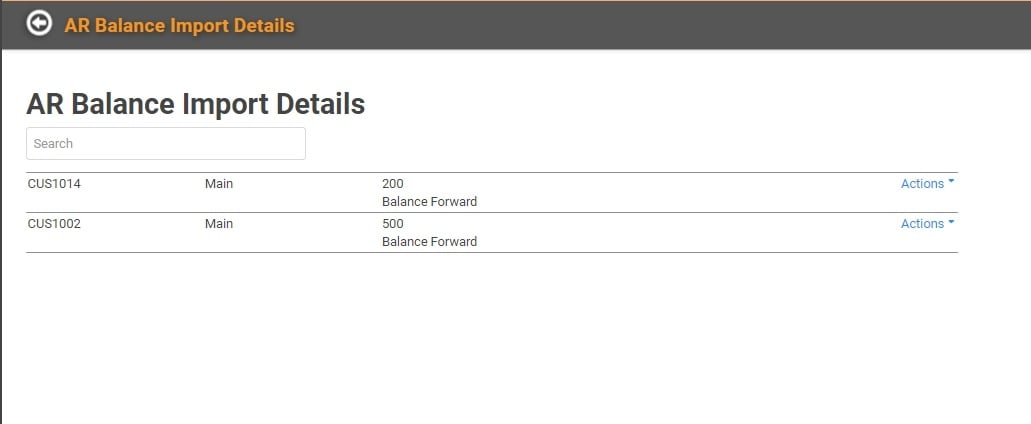
You can click Actions and Edit to make changes to a line item.
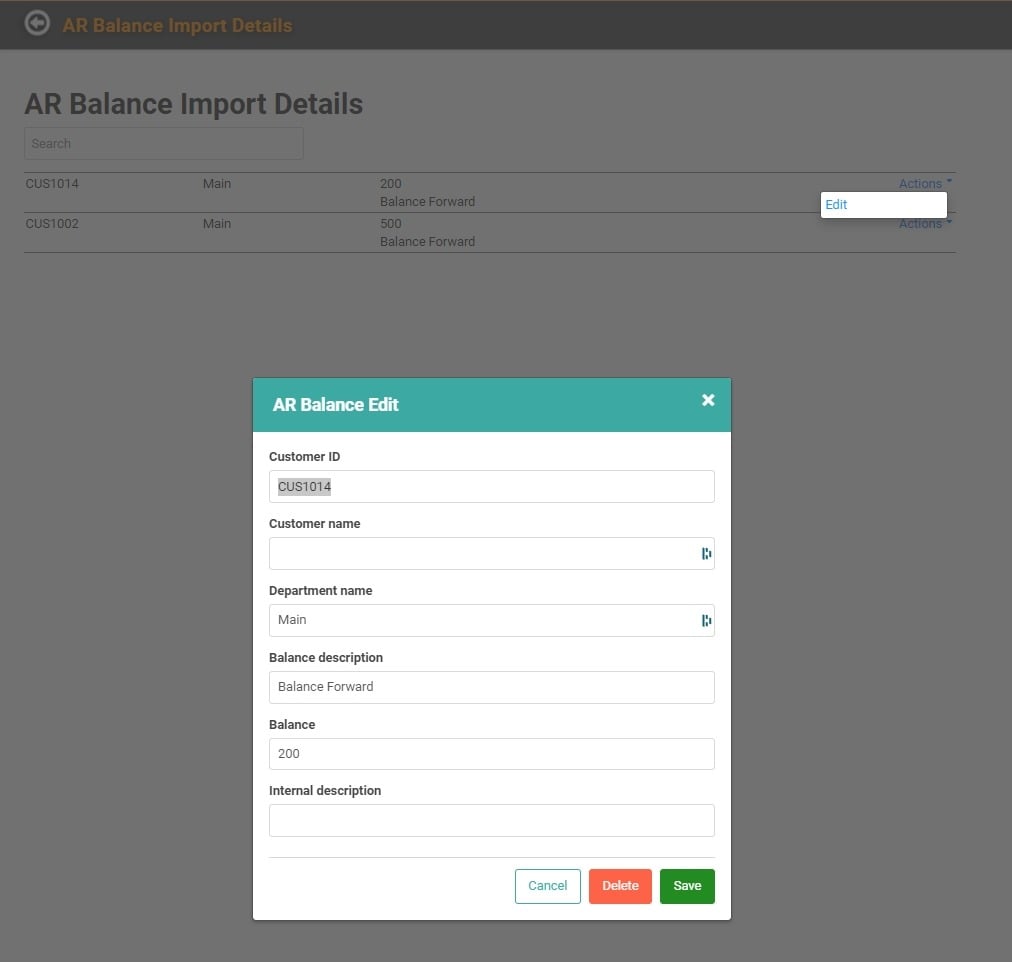
IMPORTANT! Do not remove data from required fields without replacing it. The upload will fail if you don’t have the required fields correctly populated.
You can update Beginning Balance information after it’s uploaded during Onboarding. Once you go live, you cannot update Beginning Balances. To update AP Balances after go-live, you will have to follow the standard Expense process.
Once you’ve confirmed the data is correct, you are ready to import! Go back to the Spreadsheet Uploads page and click the Actions link next to the line item for the import and select Import.
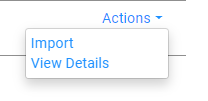
You will receive a confirmation message.
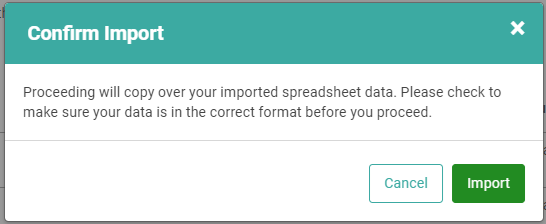
Click Import and the status should update from Ready to Import to Complete once the import finishes processing. As with the upload, once you click Import you can walk away. You will receive an email letting you know when the Import has completed.
IMPORTANT! Imports with 5000 or more records will be queued to complete after 4pm PST.
Once the Import has completed, you will see the Beginning Balances on the Customer Profiles as well as on the Beginning Balance screen where you can manually enter Beginning Balances. You can continue to make changes to these Beginning Balances on that screen, as well as manually add additional Beginning Balances and Export the balances out of LOU.
REMEMBER! We recommend you keep all your completed Import Spreadsheets as a record of your data, and in the event of a problem that requires correction. Additionally, (especially if you’ve manually added balances along with the imports) we recommend exporting the Beginning Balances data just prior to go-live so that you have all that information for your records.
Rollback an Import
If you complete the Import and realize there’s a mistake, you can undo the Import under specific circumstances. The data must not have been manually updated, added to, or changed after the import.BEWARE! A Rollback will essentially make it as if the data never existed, deleting all mention of them in the database.
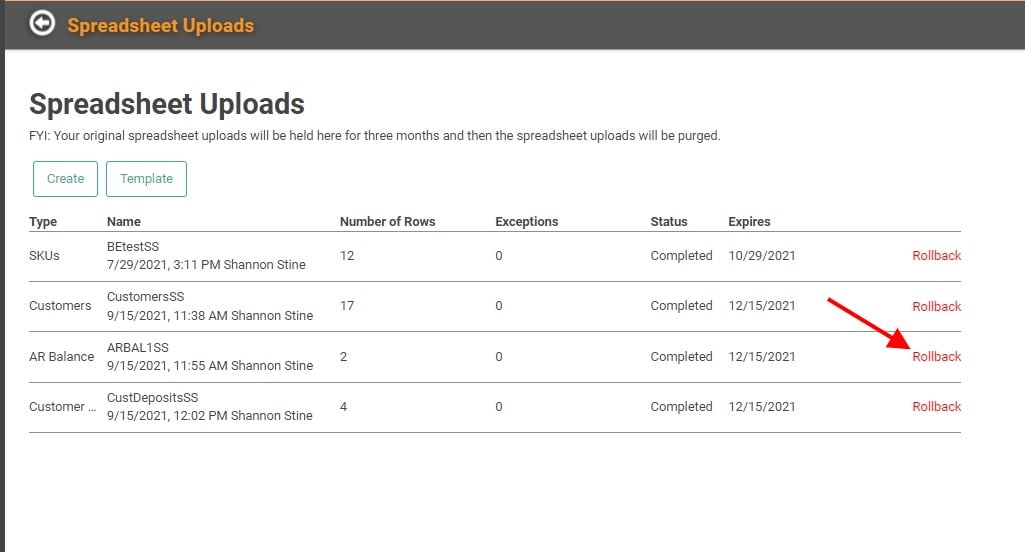
When you click the Rollback link, you’ll receive a message confirming you really want to roll back the data.
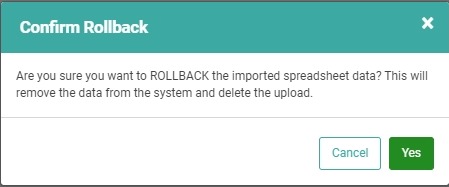
Once you click Yes, the import will be rolled back and the upload will be removed from the system. It will no longer appear on your Import Data page.
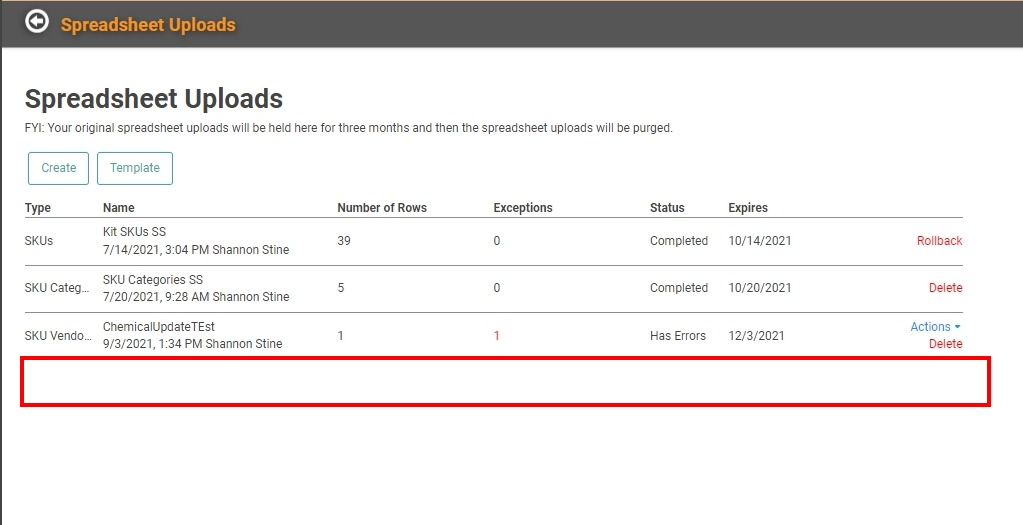
Errors in the Import
You may have errors in your file. Maybe you forgot a required field. Maybe you have a character in a field which doesn’t belong. Maybe you included data that is already in your database. When there is a problem with data in your upload, LOU will tell you. After you’ve completed the steps to upload above, you may see a number under the Exceptions column and the Status updated to Has Errors.Click the Actions link next to this line item to see what actions you can take to view and correct the errors.
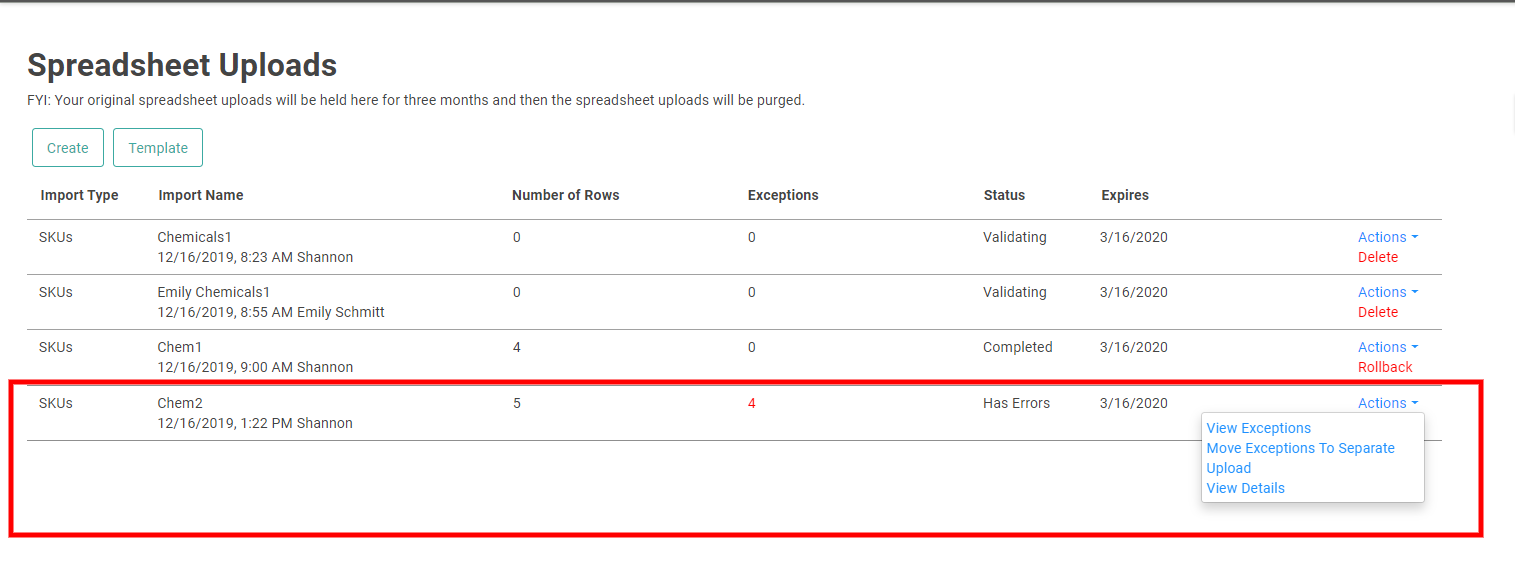
Click View Exceptions to see the errors. This will take you to a Details page with each item in the spreadsheet listed. The ones with errors will have a red bAP with the error message in it.

